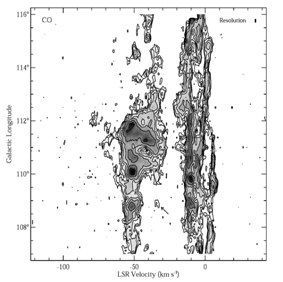Mapping the Galaxy with CO
Figure: Emission Comparison. A comparison between the galactic optical emission
(top) Figure: CO Emission.
and the J=1→0 emission of CO (bottom).

Figure: Emission Comparison. A comparison between the galactic optical emission
(top)
and the J=1→0 emission of CO (bottom).
References
- A CO Survey of Giant Molecular Clouds near Cassiopeia A and NGC 7538 Astrophys. J. 537, 221-235 (2000). Google Scholar